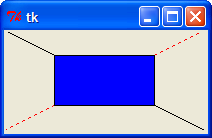

extend(iterable) - extend list by appending elements from the iterable index(.) L. count(value) -> integer - return number of occurrences of value extend(.) L. append( object) - append object to end count(.) L. Use of negative indices is not supported. _reversed_() - return a reverse iterator over the list _rmul_(.) x. _init_(.) initializes x see help(type(x)) for signature _iter_(.) x. Use of negative indices is not supported. Usually the upper left width(self) Returns the width of the bbox. upperleft(self) Returns the first corner of the bbox. Point pos(self, offset) Returns the position at the given offset from the upper-left setbottom(self, val) setleft(self, val) # top, bottom, left, and right can be accessed as attributes setright(self, val) settop(self, val) union(self, other) Returns a new bbox that covers self and other.Īssumes that the positive y direction is UP. offset(self, pos) Returns the vector between the upper-left corner of self and pos. midright(self) Returns the midpoint of the right edge as a Point object. Usually the lower right midleft(self) Returns the midpoint of the left edge as a Point object. lowerright(self) Returns the second corner of the bbox. height(self) Returns the height of the bbox. copy(self) flatten(self) Returns a list of four coordinates. Method resolution order: BBox _builtin_.list _builtin_.objectĬenter(self) Returns the midpoint of the bbox as a Point object. The first coordinate is the upper-left corner the second pair isĪssumes pixel coordinates that is, a higher y-value is lower.Ĭreating a new bounding box makes a _shallow_ copy of List of coordinates, where each coordinate is a pair or a Point. Gui _builtin_.list( _builtin_.object)īBox Point _builtin_.object Callable Item Transform CanvasTransform RotateTransform SwirlTransform ScaleTransform GuiCanvas Tkinter.Tk( Tkinter.Misc, Tkinter.Wm) Tkinter.Canvas( Tkinter.Widget, Tkinter.XView, Tkinter.YView) GuiCanvas provides wrappers for the canvas item methods.

(underride means set only if not already set). In with the other options and then underride them That want different defaults have to roll the arguments Widgets that use these defaults can just pass alongĪrgs and options unmolested. Keyword arguments are passed as options to the widget The Gui class contains wrappers for the widgets in tkinter.Īll of the wrappers invoke widget() to create and pack the new widget.Īrguments determine how the widget is packed.

The most important idea in this module is using a stack of frames toĪvoid keeping track of parent widgets explicitly. Transform: an abstract class that provides basic methods inheritedīy CanvasTransform and the other transforms.ĬanvasTransform: a transformation that maps standard CartesianĬoordinates onto the 'graphics' coordinates used by Canvas objects.Ĭallable: the standard recipe from Python Cookbook for encapsulatingĪ function and its arguments in an object that can be used as a Is, again, that they use optional arguments to provide appropriateĭefaults, and that they perform coordinate transformations. GuiCanvas: a subclass of Canvas that provides wrappers for most of the Parent widget explicitly by keeping track of a current frame and That they use Python's optional argument capability to provideĪppropriate default values, and that they combine widget creation and Gui: a sublass of Tk that provides wrappers for most of the This module provides the following classes: This module is part of Swampy, a suite of programs available fromĭistributed under the GNU General Public License at gnu.org/licenses/gpl.html.


 0 kommentar(er)
0 kommentar(er)
